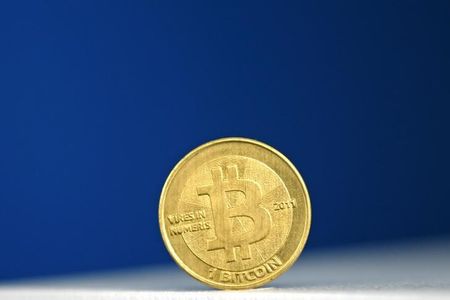In 2024, Bitcoin has spearheaded the cryptocurrency frenzy, impressing the financial world with its remarkable performance. Its price surge shows no signs of abating, fueled by increasing inflows from exchange-traded funds (ETFs) and the impending halving, promising a bright future for the digital currency.
With a staggering number of investors joining the Bitcoin bandwagon, boasting over 50 million wallets holding a nonzero balance, the introduction of Bitcoin ETFs is expected to further escalate participation.
In the landscape of 2024, Bitcoin is viewed more as a lucrative investment opportunity rather than solely a store of value. Investors, having witnessed substantial gains and record highs, are now inclined towards short-term profit-making strategies, deviating slightly from the perception during the bull market of 2020 and 2021, where Bitcoin served as a hedge against inflation and a store of value due to its unique token distribution system.
Bitcoin’s token supply undergoes continuous expansion through mining rewards, albeit at a decreasing rate. The halving mechanism, reducing token rewards by half every four years, contrasts sharply with the conventional monetary system’s exponential supply growth.
The inherent deflationary nature of Bitcoin’s token supply suggests the potential for faster appreciation in value compared to traditional inflationary currencies. This characteristic appeals to Bitcoin holders as it implies an increase in purchasing power over time, reinforcing its role as a store of value rather than a mere speculative asset.
Enthusiasts of Bitcoin champion its ability to preserve and even enhance buying power over time, envisioning widespread adoption that could eventually facilitate everyday transactions solely in Bitcoin.
To support these concepts, several metrics examine Bitcoin’s purchasing power over time. Notably, a recent viral post by user @IIICapital on X highlighted the median U.S. house price denominated in BTC:
2012 – 50,616 BTC
2013 – 19,127 BTC
2014 – 351 BTC
2015 – 901 BTC
2016 – 697 BTC
2017 – 323 BTC
2018 – 24 BTC
2019 – 84 BTC
2020 – 46 BTC
2021 – 10 BTC
2022 – 20 BTC
2023 – 14 BTC
2024 – 7 BTC
For context, back in 2012, the median house price stood at approximately $240,000, while Bitcoin’s lowest value was around $4.70. This translated to roughly 50,000 BTC per house. Fast forward to 2024, where the median house price hovers just below $420,000, and Bitcoin recently soared past $70,000. With these figures, the median house is valued at six Bitcoin.
While the data may appear somewhat skewed due to using yearly Bitcoin lows from the early years, it remains accurate.
Consider this: if you had invested a few dollars in Bitcoin back in 2012, today you could afford a house priced at over $450,000. This deflationary characteristic of Bitcoin serves as a primary incentive for HODLers to continue acquiring the cryptocurrency.




